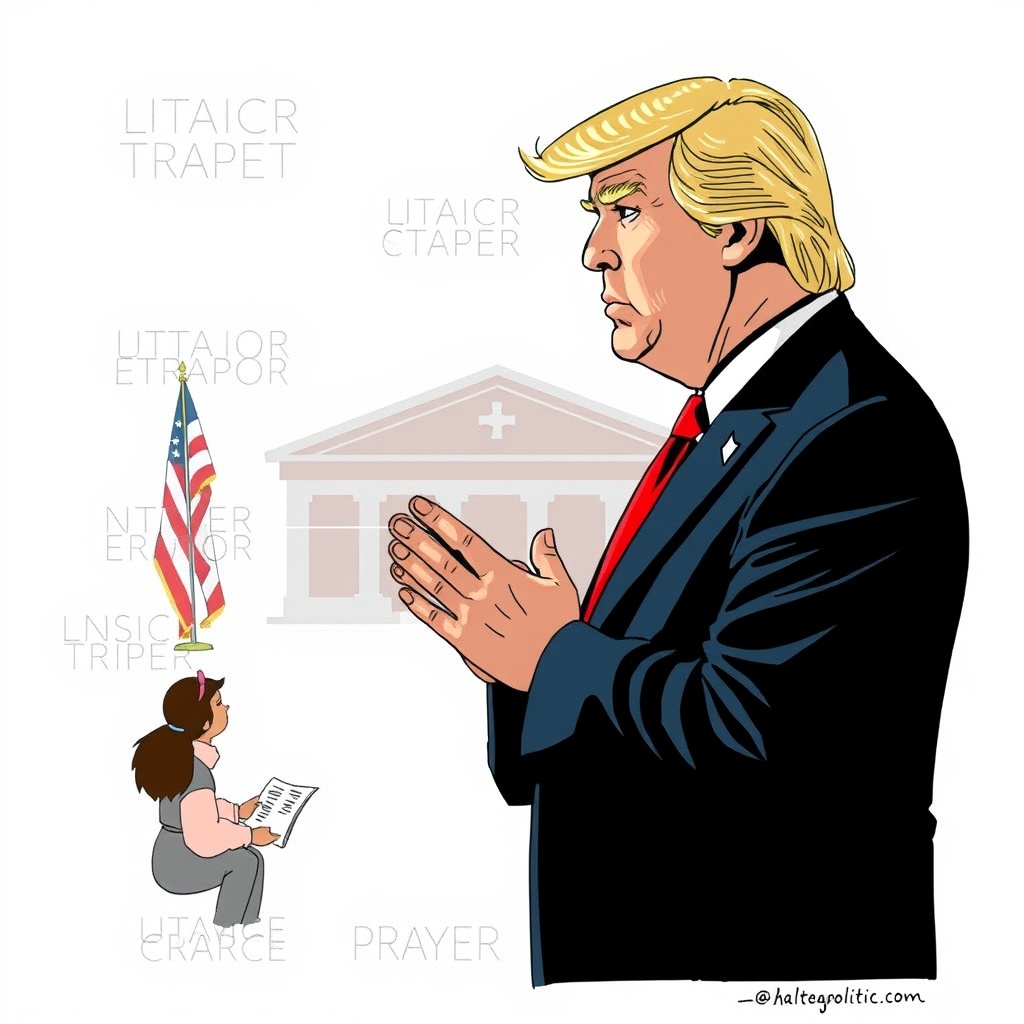Introduction
The debate over prayer in public schools has been a contentious issue in the United States for decades. On one hand, proponents of school prayer argue that it is a fundamental right protected by the First Amendment, which guarantees freedom of speech and religion. On the other hand, opponents argue that mandatory school prayer violates the Establishment Clause of the First Amendment, which prohibits the government from promoting or endorsing a particular religion. Recently, President Donald Trump announced that he would direct the Department of Education to protect praying in public schools, sparking a renewed debate over the role of religion in public education. In this article, we will explore the history of school prayer, the current state of the law, and the potential implications of President Trump's announcement.
History of School Prayer
The history of school prayer in the United States is complex and has been shaped by numerous court decisions and legislative actions. In the early 20th century, many public schools began to incorporate prayer and Bible reading into their daily routines. However, in the 1960s, a series of landmark Supreme Court cases challenged the constitutionality of these practices. In Engel v. Vitale (1962), the Court held that mandatory prayer in public schools was unconstitutional, as it violated the Establishment Clause. Two years later, in Abington School District v. Schempp (1964), the Court extended this ruling to prohibit Bible reading and other forms of religious instruction in public schools.
Despite these rulings, many schools continued to allow voluntary prayer and other forms of religious expression. In 1984, Congress passed the Equal Access Act, which prohibited public schools from denying students the right to form religious clubs or engage in other forms of religious expression. However, the Act also emphasized that schools could not sponsor or promote religious activities, and that students' participation in such activities must be entirely voluntary.
Current State of the Law
Today, the law regarding school prayer is nuanced and often depends on the specific circumstances. The Supreme Court has established a series of tests to determine whether a particular practice or policy violates the Establishment Clause. For example, in Lemon v. Kurtzman (1971), the Court developed a three-part test to evaluate the constitutionality of government actions that may promote or endorse religion. The test asks whether the action (1) has a secular legislative purpose, (2) has a primary effect that neither advances nor inhibits religion, and (3) does not foster an excessive government entanglement with religion.
In the context of school prayer, courts have generally held that schools may not sponsor or promote prayer, but students may engage in voluntary prayer or other forms of religious expression. For instance, in Lee v. Weisman (1992), the Supreme Court ruled that a public school could not invite a rabbi to deliver a prayer at a graduation ceremony, as this would constitute an impermissible government endorsement of religion. However, in Santa Fe Independent School District v. Doe (2000), the Court held that students could lead voluntary prayers over a public address system before football games, as long as the school did not sponsor or promote the prayers.
Implications of President Trump's Announcement
President Trump's announcement that he would direct the Department of Education to protect praying in public schools has significant implications for the debate over school prayer. While the details of the proposed guidelines are not yet clear, they may potentially challenge the existing legal framework and lead to a shift in the balance between religious freedom and the separation of church and state.
Proponents of President Trump's announcement argue that it will help to protect the rights of students who wish to engage in voluntary prayer or other forms of religious expression. They contend that the current legal framework often leads to overzealous restrictions on religious freedom, and that the proposed guidelines will help to clarify the rights of students and schools.
On the other hand, opponents argue that President Trump's announcement may lead to a erosion of the separation of church and state, and potentially open the door to government-sponsored prayer or other forms of religious instruction. They contend that the proposed guidelines may be used to justify discriminatory practices or to promote a particular religious agenda, and that they may ultimately undermine the principles of religious freedom and equality that underlie the First Amendment.
According to a recent survey conducted by the Pew Research Center, 64% of Americans believe that public schools should not sponsor or promote prayer, while 31% believe that they should. The same survey found that 77% of Americans believe that students should be allowed to engage in voluntary prayer or other forms of religious expression, as long as it does not disrupt the school or infringe on the rights of others.
Conclusion
The debate over school prayer is complex and contentious, with deeply held views on both sides. President Trump's announcement that he would direct the Department of Education to protect praying in public schools has sparked a renewed debate over the role of religion in public education, and raises important questions about the balance between religious freedom and the separation of church and state.
As the Department of Education develops its proposed guidelines, it is essential to consider the potential implications for students, schools, and the broader community. The guidelines must be carefully crafted to protect the rights of all students, regardless of their religious beliefs or backgrounds, and to ensure that public schools remain a welcoming and inclusive environment for everyone.
Ultimately, the issue of school prayer is not just a matter of law or policy, but also a reflection of our values and principles as a society. As we move forward, it is essential to engage in a thoughtful and respectful dialogue about the role of religion in public education, and to work towards a solution that promotes the values of equality, inclusivity, and religious freedom that are at the heart of our democracy.


Leave a comment